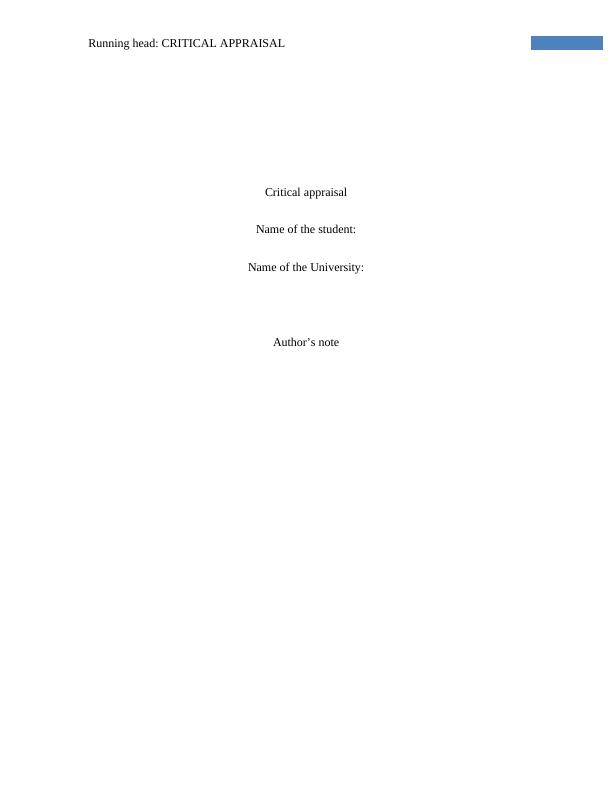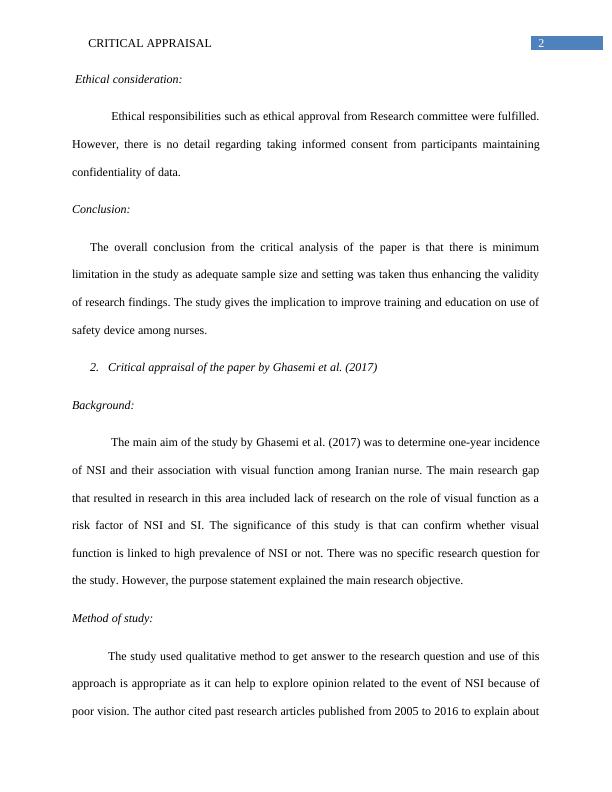Critical Appraisal of Qualitative and Quantitative Studies
Added on 2022-11-28
8 Pages1729 Words174 Views
End of preview
Want to access all the pages? Upload your documents or become a member.
Case Study about Healthcare 2022
|12
|3217
|19
Evidence Based Practise Needle Stick Injury Assignment 2022
|10
|2255
|34
Systematic Study Review.
|12
|3031
|144
Health Care Elizabeth Karanja Article 2022
|9
|2085
|21
Critical Appraisal of a Research Paper on the Association between Obstetric Complications and Risk of Schizophrenia
|10
|2810
|104



